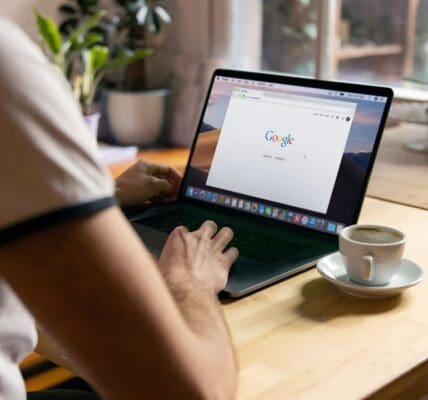In the digital landscape, where visual content plays a pivotal role in user engagement, image optimization emerges as a critical component of search engine optimization (SEO). Images not only enhance the aesthetic appeal of a website but also contribute significantly to its overall performance in search engine rankings. When images are optimized, they load faster, which is essential for retaining visitors and reducing bounce rates.
Search engines like Google prioritize user experience, and a website that loads quickly is more likely to rank higher in search results. Therefore, optimizing images is not merely a technical task; it is an integral part of a broader strategy aimed at improving visibility and user satisfaction. Moreover, optimized images can lead to increased organic traffic through image search results.
When images are properly tagged with relevant keywords in their file names and alt text, they become discoverable in image searches. This can drive additional traffic to a website, as users often search for specific images related to their queries. For instance, a blog post about healthy recipes that includes well-optimized images of the dishes can attract users searching for those specific meals.
By understanding the importance of image optimization, webmasters can harness the power of visual content to enhance their SEO efforts and ultimately achieve better online visibility.
Key Takeaways
- Image optimization is crucial for SEO as it improves page load time and user experience.
- Choosing the right file format for images is important for balancing quality and file size.
- Compressing images is essential for faster page load time without compromising quality.
- Descriptive file names and alt text help search engines understand and index images.
- Implementing responsive images ensures optimal display on different devices for better user experience.
Choosing the Right File Format for Images
Understanding JPEG
JPEG is widely used for photographs and images with gradients due to its ability to compress large files while maintaining reasonable quality. However, it does not support transparency, which can be a limitation for certain types of graphics.
The Advantages of PNG and WebP
On the other hand, PNG is preferred for images that require transparency or those with text and sharp edges, as it preserves quality without losing detail. WebP is an emerging format that offers superior compression capabilities compared to both JPEG and PNG. It supports both lossy and lossless compression, making it versatile for various types of images.
Optimizing for Mobile Users and Compatibility
By using WebP, webmasters can achieve smaller file sizes without sacrificing quality, which is particularly beneficial for mobile users with limited bandwidth. However, compatibility with older browsers may be a concern, so it’s essential to implement fallback options for users who may not support this format. Understanding the strengths and weaknesses of each file format allows webmasters to make informed decisions that align with their website’s goals and audience needs.
Compressing Images for Faster Page Load Time

Image compression is a crucial technique in optimizing images for faster page load times. Large image files can significantly slow down a website, leading to poor user experience and higher bounce rates. There are two primary types of image compression: lossy and lossless.
Lossy compression reduces file size by permanently removing some data from the image, which can result in a decrease in quality. This method is often suitable for photographs where slight quality loss may not be noticeable to the average user. Tools like Adobe Photoshop and online services such as TinyPNG or Compressor.io can effectively compress images while maintaining acceptable quality levels.
Lossless compression, on the other hand, reduces file size without sacrificing any image quality. This method is ideal for images that require high fidelity, such as logos or graphics with text.
An often underutilized tool in image optimization is the image sitemap, which plays a vital role in helping search engines index images more effectively. An image sitemap is an XML file that provides information about the images on a website, including their location, caption, title, and license information. By submitting an image sitemap to search engines like Google, webmasters can ensure that their images are crawled and indexed more efficiently, increasing the likelihood of appearing in image search results.
Creating an image sitemap involves identifying all relevant images on a website and compiling them into an XML format that adheres to search engine guidelines. This process can be automated using various SEO plugins available for content management systems like WordPress or through custom scripts for more complex sites. Additionally, including structured data markup alongside images can further enhance indexing by providing additional context about the content.
By leveraging image sitemaps effectively, webmasters can improve their site’s visibility in search results and drive more organic traffic through enhanced image discoverability.
Considering Lazy Loading for Better Performance
Lazy loading is an innovative technique that defers the loading of images until they are needed—specifically when they come into the user’s viewport during scrolling. This approach significantly improves page load times by reducing initial data transfer and resource consumption, particularly on pages with numerous images or heavy media content. By implementing lazy loading, webmasters can enhance user experience by ensuring that visitors do not have to wait long for content to appear on their screens.
There are various methods to implement lazy loading, including native browser support through the `loading=”lazy”` attribute in HTML or using JavaScript libraries designed for this purpose. Native lazy loading is straightforward; simply adding this attribute to `` tags allows browsers to handle lazy loading automatically without additional scripts. For more complex implementations or when additional features are required (such as animations or placeholders), JavaScript libraries like Lozad.js or LazyLoad.js can be employed.
By considering lazy loading as part of their optimization strategy, webmasters can create faster-loading pages that retain user attention and improve overall site performance.
Monitoring and Testing Image Optimization for Continuous Improvement
The process of image optimization does not end with initial implementation; continuous monitoring and testing are essential to ensure ongoing effectiveness and adaptability to changing web standards or user behaviors. Tools such as Google PageSpeed Insights or GTmetrix provide valuable insights into how images impact page load times and overall site performance. These tools analyze various factors related to image optimization and offer actionable recommendations for improvement.
Regularly reviewing analytics data can also reveal how users interact with images on a site—such as which images drive traffic or lead to conversions—and inform future optimization efforts. A/B testing different image formats or sizes can help determine what works best for specific audiences or content types. By adopting a proactive approach to monitoring and testing image optimization strategies, webmasters can ensure that their sites remain competitive in search rankings while providing an exceptional user experience that keeps visitors engaged over time.
FAQs
What is image optimization for SEO?
Image optimization for SEO is the process of improving the quality and relevance of images on a website to make them more search engine friendly. This includes reducing file sizes, adding descriptive file names and alt text, and ensuring images are properly formatted for web use.
Why is image optimization important for SEO?
Image optimization is important for SEO because it can improve a website’s page load time, which is a ranking factor for search engines. Additionally, properly optimized images can also improve the overall user experience and accessibility of a website.
How does image optimization improve page load time?
Image optimization improves page load time by reducing the file size of images, which allows web pages to load faster. This can lead to a better user experience and can also positively impact a website’s search engine rankings.
What are some best practices for optimizing images for SEO?
Some best practices for optimizing images for SEO include using descriptive file names and alt text, choosing the right file format (such as JPEG or PNG), reducing image file sizes without sacrificing quality, and using responsive images for different devices and screen sizes.
What tools can be used to optimize images for SEO?
There are several tools available for optimizing images for SEO, including Adobe Photoshop, GIMP, and online tools such as TinyPNG and Kraken.io. Content management systems like WordPress also offer plugins that can help with image optimization.












